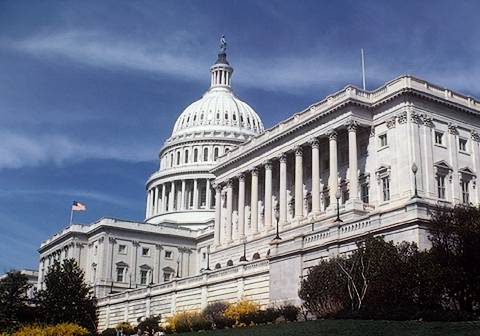
Agricultural News
OSU Economists Explain Where We've Come From and Where We're Going with 2013 Farm Bill
Fri, 18 Oct 2013 16:24:31 CDT

Two Oklahoma State University faculty members have written a paper documenting the journey toward what those in agriculture hope will culminate in the final adoption of the 2013 farm bill. Jody L. Campiche and Larry D. Sanders explore where the measure stands currently, what it means and what will happen in the near future. (You can read their entire report by clicking here.)
In brief, on September 30, 2013, the 2008 farm bill expired yet again. A year ago, the 2008 farm bill expired for the first time on September 30, 2012. This time, however, the issue is further clouded by the recent government shutdown, the continuation of current spending levels through January 15th, and punting on the debt crisis until February 7th, and other problems.
This is exacerbated by the fact that 37 programs have not received extended baseline funding and the disaster assistance program was dropped after the 2012 extension.
Though House and Senate agriculture committees have worked to pass new farm legislation, the current political turmoil in Washington has pushed the bill to the back burner.
Recent action, including the creation of conference committees in both the House and Senate have jumped started the process. There is a wide gap between the two bills that must be bridged for there to be any progress toward passage. The Senate version embodies $4 billion in cuts to farm and nutrition programs over ten years; The House version calls for $39 billion in cuts. This leads some lawmakers to wonder if another extension will be necessary.
Unfortunately, under an extension, some programs in the bill would be funded while others would not due to the intricacies of the authorization vs. appropriations process. On top of that, some programs can be funded by a continuing resolution, under which the government is currently operating, while others cannot.
To further complicate the matter, without further movement on the 2013 farm bill, farm law is set to revert to the 1949 permanent law which would ax numerous programs and return farming to parity prices, acreage allotments and marketing quotas.
If an extension had not occurred in January 2013, reversion to permanent law would have occurred (assuming that Congress did not pass a bill to suspend or repeal it) and the impact on farm bill programs would be significant since some programs would cease to exist under permanent law. A reversion to permanent law would also mean that parity prices, acreage allotments, and marketing quotas would all return.
Campiche and Sanders conclude that:
Now that the 2008 Farm Bill has expired (again), many are waiting to see what will happen next. The next step will be a farm bill conference between the House and Senate and a move toward a new farm bill or an extension by January 2014. It is likely that during conference, the House and Senate will compromise on commodity and nutrition programs, but there may also be an attempt to use the Senate bill as the vehicle for the 2013/14 farm bill. The conference bill will probably pass in the Senate but will probably not pass in the House unless there is an open floor vote. The final compromise bill signed by the President will likely include limited cuts to nutrition programs.
Although this is the probable course of action for the farm bill, several major stumbling blocks lie in the path to a new farm bill. In addition, the conference committee may not be able to compromise on a farm bill. Farm bill deliberations in the past 2 years suggest that this is definitely a likely event. It is also uncertain whether or not Congress or the President will approve a second extension. With time running out and a limited number of Congressional working days remaining this year (along with numerous distractions), the farm bill has an uncertain future.
WebReadyTM Powered by WireReady® NSI
Top Agricultural News
More Headlines...



















